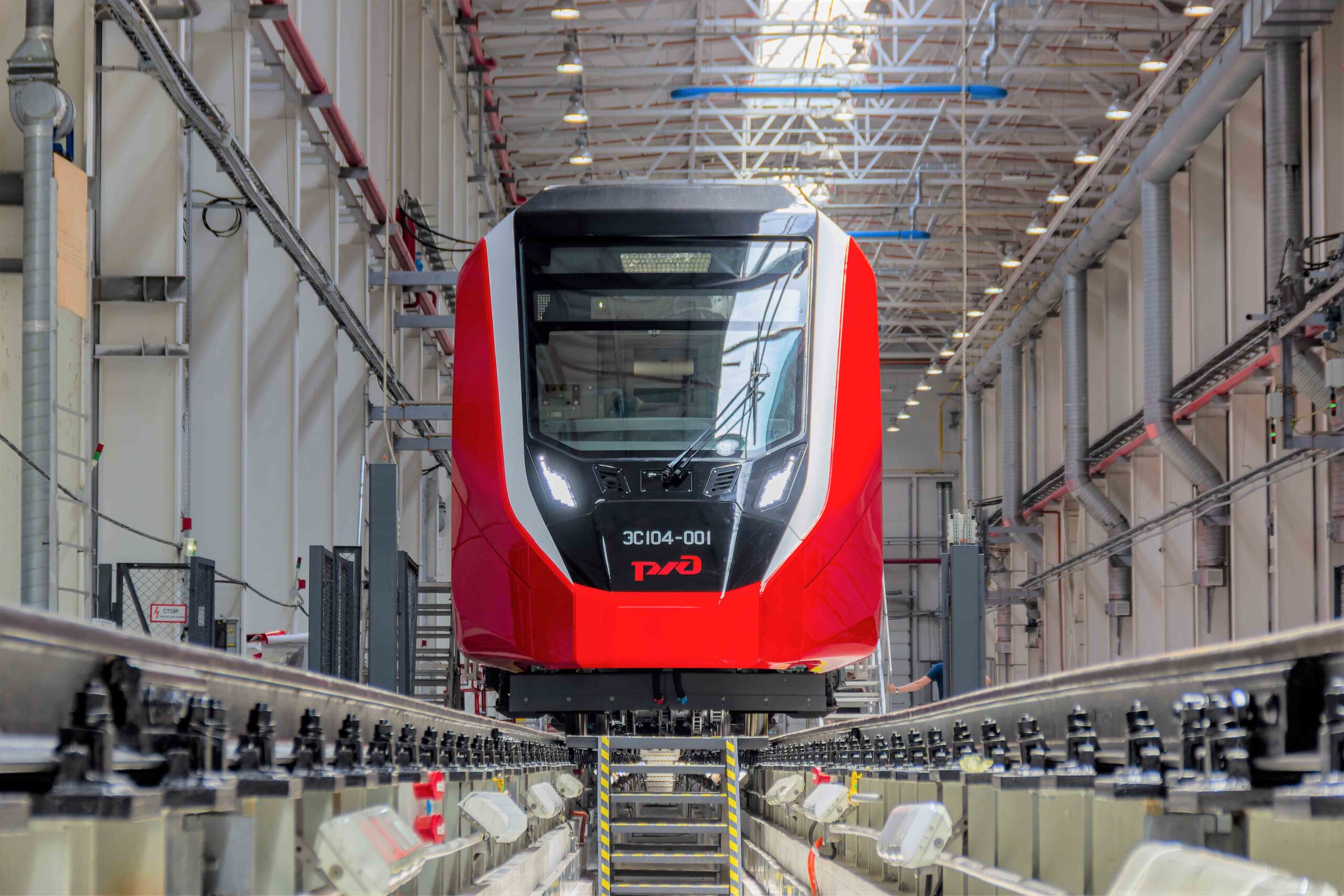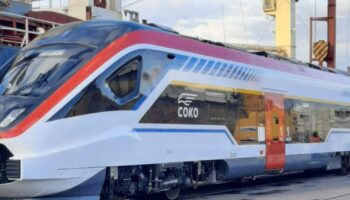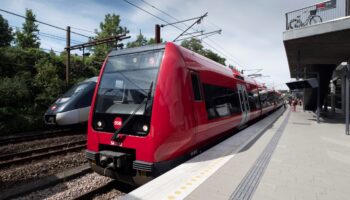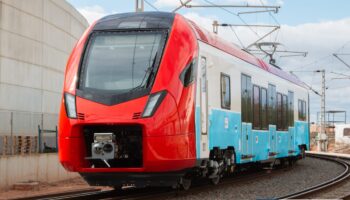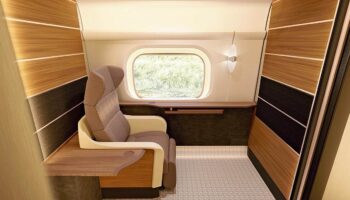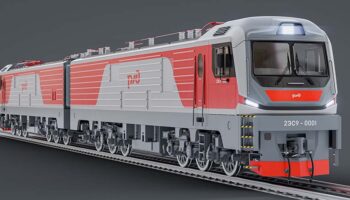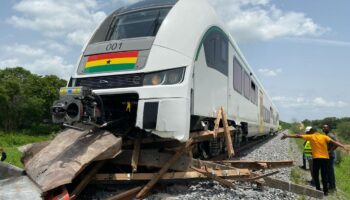Russia: Certification to TR EAEU 001/2011 requirements will be valid for five years until November 2028.
During acceptance activities held in mid-November at the Ural Locomotives plant, a subsidiary of Sinara-Transport Machines, STM, it was decided to approve the production of 60 trains and monitor their operation over a 12-month period.
In April this year, the Trading House STM and Russian Railways, RZD, signed a contract for the delivery of 22 trains. According to Sinara Group, the operator has already received four five-car trains and expects to receive eight by the end of 2023. So far, RZD has accepted two of them after tests in multiple. “Before the passenger service, these trains will undergo various tests, including those of the passenger information system, HVAC system, and service equipment”, explained RZD’s representative. If the tests are successfully completed, the trains will be put into operation on regular routes of the Sverdlovsk Railway.
 Interior of the ES104 EMU. Source: Sinara Group
Interior of the ES104 EMU. Source: Sinara Group
The Ural Locomotives announced the development of a new EMU platform in 2021. Increased sanctions pressure, Siemens’ leaving Russia, and restricted access to components of foreign manufacturers forced the company to accelerate the development of an alternative to the ES2G/ES1P/ES1GP Lastochka trains, which already were in serial production. The new ES104 was designed and built in just one year, and its prototype was unveiled this summer.
If the Lastochka EMUS has traction equipment in the end cars, the new train has it in intermediate ones. According to the manufacturer, this change means that a five-car train with three motor cars can accelerate to 1.1 m/s2 compared to 0.7 m/s2 with only two motor cars A trainset can vary from 3 to 12 cars, and has a design service life of 40 years.
In 2024–2026, the manufacturer plans to develop new trains based on the ES104: the dual-system ES105, the battery-powered ES105A, the ES106 for cities with high passenger traffic, and the double-decker ES106D. The middle of 2024 is expected to see the release of an unmanned GoA4 train with equipment developed by NIIAS, a Russian Railways institute engaged in intelligent control and train safety systems.





